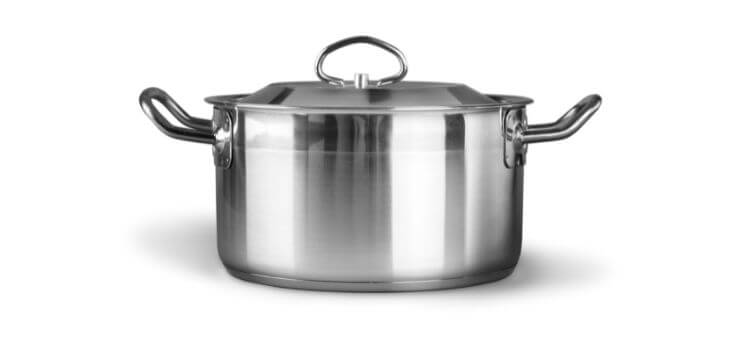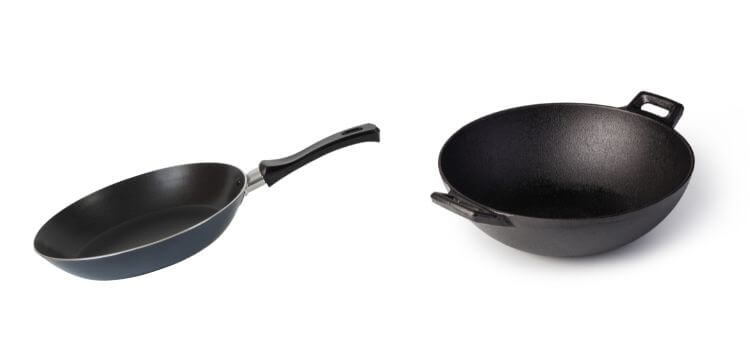As an Amazon Associate, I earn from qualifying purchases

Navigating the world of cookware can be daunting, especially when trying to differentiate between aluminum and stainless steel. Both materials have their unique advantages and uses in the kitchen, but telling them apart is crucial for choosing the right tool for your culinary endeavors.
Knowing the differences can help you make informed decisions, whether you’re shopping for new cookware or simply reorganizing your kitchen.
Physical Characteristics
One of the easiest ways to distinguish between aluminum and stainless steel is by examining their physical characteristics. Aluminum cookware often has a softer, more matte finish compared to the shiny, polished appearance of stainless steel. Aluminum is generally lighter in weight, making it easier to handle, especially for larger pots and pans. On the other hand, stainless steel tends to be heavier and has a more substantial feel due to its density and robust construction.
When inspecting cookware, consider the color and texture. Aluminum may appear more silver or gray, while stainless steel often has a mirror-like shine. Running your fingers across the surface can also reveal differences; aluminum may feel smoother, while stainless steel might present a more textured surface due to its polishing.
Magnetic Test
A simple yet effective method to differentiate between the two materials is the magnetic test. Stainless steel, depending on its composition, may exhibit magnetic properties. By bringing a magnet close to your cookware, you can quickly determine its material. If the magnet sticks, you likely have stainless steel, as aluminum is not magnetic.
However, it’s important to note that not all stainless steel is magnetic. Some grades, particularly those used in higher-end cookware, may have low or no magnetic attraction. Therefore, while this test is useful, it shouldn’t be the only method you rely on.
Heat Conductivity
Aluminum is known for its excellent heat conductivity, which means it heats up quickly and evenly. Stainless steel, while slower to heat, retains heat longer than aluminum. To test this at home, you can observe how quickly each material heats on the stove or how evenly it distributes heat when cooking.
A practical approach is to place both types of cookware on a burner at the same setting and observe which heats up faster. The aluminum piece will likely reach cooking temperature more quickly than its stainless steel counterpart, a handy trait for recipes requiring precise temperature control.
Sound Test
The sound test is another intriguing way to identify cookware material. By gently tapping the side of the pan or pot, you can discern differences in sound. Aluminum tends to produce a duller, softer sound due to its lightweight nature. In contrast, stainless steel often resonates with a clearer, ringing tone.
While this method might seem unconventional, it can be effective, especially in combination with other tests. The sound difference becomes more apparent with practice and can be a fun way to engage with your cookware.
Markings and Labels

Manufacturers often include markings or labels that can help identify the material. Look for stamps or engravings on the bottom of the cookware, which may indicate the type of metal used. Aluminum cookware might be marked with terms like “anodized” or simply “aluminum,” while stainless steel usually includes specific grades like 18/10 or 304.
Understanding these markings can provide insight into the quality and characteristics of the cookware. Anodized aluminum, for example, is treated to resist corrosion and wear, whereas different grades of stainless steel denote varying levels of chromium and nickel content, affecting durability and resistance to rust.
Price and Brand Considerations
Price can be a significant indicator when distinguishing between aluminum and stainless steel cookware. Generally, stainless steel tends to be more expensive due to its durability and corrosion-resistant properties. Aluminum cookware, being less costly to produce, often comes at a lower price point.
Additionally, certain brands are known for specializing in one material over the other. Familiarizing yourself with reputable brands for each type can guide your purchasing decisions. Brands like All-Clad are synonymous with high-quality stainless steel, while companies like Calphalon are renowned for their aluminum cookware offerings.
Usage and Performance
Both aluminum and stainless steel have distinct performance characteristics that make them suitable for different cooking tasks. Aluminum’s rapid heat conduction is ideal for sautéing and frying, where quick temperature changes are beneficial. Stainless steel, with its heat retention and durability, excels in browning and deglazing, making it perfect for searing meats and crafting complex sauces.
Consider your cooking style and the types of dishes you frequently prepare when choosing between the two. If you value quick heat-up times and lightweight cookware, aluminum may be the way to go. Alternatively, if you prefer a versatile, long-lasting option that performs well across a range of cooking techniques, stainless steel might be your best bet.
Conclusion
Identifying aluminum from stainless steel cookware doesn’t have to be a daunting task. By understanding the physical characteristics, employing simple tests, and considering factors like price and brand, you can confidently discern between the two materials.
Each has its unique strengths and applications in the kitchen, so equipping yourself with the right knowledge ensures you select the best cookware to suit your needs. Whether you’re a seasoned chef or a novice cook, these tips will help you make informed decisions for a more efficient and enjoyable cooking experience.
FAQ
How can I tell if something is stainless steel or aluminum?
To differentiate, check the weight and appearance: stainless steel is heavier and shinier, while aluminum is lighter with a matte finish. Use a magnet; stainless steel may be magnetic, but aluminum is not. Also, tap the surface—stainless steel emits a clearer sound.
Is it better to cook with aluminum or stainless steel?
It depends on your cooking needs. Aluminum heats quickly, ideal for sautéing and frying, while stainless steel retains heat well, perfect for browning and deglazing. Consider weight, heat conduction, and durability when choosing. For versatility and longevity, stainless steel is often preferred.
How can you tell if stainless steel cookware is real?
Check for weight, finish, and magnetic properties—real stainless steel is heavier, has a polished finish, and might be magnetic. Inspect for markings or labels indicating the grade, like 18/10. Reputable brands and higher prices can also indicate genuine stainless steel cookware.
As an Amazon Associate, I earn from qualifying purchases